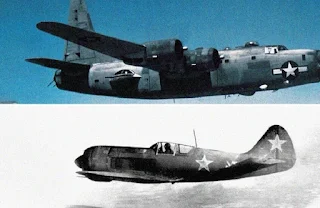The first serious air accident during the Cold War occurred in the skies over the Baltic Sea near the Latvian port of Liepaja on April 8, 1950.
Soviet La-11 fighters intercepted and shot down an American BB-4Y-2 Privateer reconnaissance aircraft, killing all ten crew members.
According to the Soviet account, four fighter jets took off from an airbase to intercept an unidentified four-engine aircraft that had penetrated Soviet airspace 21 kilometers (13 miles) deep. The pilots attempted to force the aircraft to land, but it headed toward the sea. After firing warning shots, the American aircraft returned fire, according to Soviet sources, prompting the fighters to shoot it down. The aircraft crashed 5-10 kilometers from the coast after disappearing into the clouds at an altitude of 500 meters.
The United States, however, presented a completely different account, asserting that the aircraft was conducting a reconnaissance mission in international airspace with no weapons on board except for a pistol in the possession of an officer. Initially, Western press claimed that the civilian aircraft bound for Sweden had been shot down, but the United States later admitted that the aircraft belonged to the US Navy and that its reconnaissance mission was conducted.
The Privatir was equipped with secret electronic equipment and, according to recent data, was tasked with monitoring Soviet submarine factories and airfields in the Baltic Sea. It departed from Wiesbaden in West Germany. The last contact with the aircraft was recorded at 2:40 PM local time.
After the incident, both sides conducted extensive searches. The Soviet fleet used four minesweepers and divers, but no wreckage was found.
It was later reported that a British ship discovered a life raft in the accident area, while a Swedish ship found another, but both were empty. The United States also conducted extensive searches between the islands of Gotland and Bornholm, citing the presence of classified documents and equipment on board the aircraft.
The incident sparked a heated diplomatic controversy, and Washington subsequently issued an order not to approach the Soviet border within 20 miles and not to arm reconnaissance aircraft.
But tensions continued, as the United States and the Soviet Union continued aerial reconnaissance operations that led to similar incidents later.
The downing of the Privateer represented the first in a series of aerial confrontations between the two superpowers, and a symbol of the Cold War era, when information and intelligence became weapons as important as tanks and missiles.

